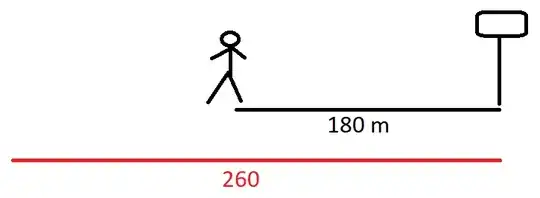If I have a word problem with a fraction, how should I know which value should be in the numerator? Say I have the following problem:
"You stand 180 meters away from a radio tower. One wavelength is 260 meters. How many wavelengths away from the radio tower are you?"
I thought of this as an equation which I have to "balance", i.e. \begin{align} 180x &= 260 \\ x&= \frac{260}{180}= 1.45 \tag 1 \end{align} ... but this was wrong. In the correct answer, the numerator and denominator are flipped, i.e. \begin{align} x&= \frac{180}{260}= 0.69 \tag 2 \end{align}
How should I know which value should be in numerator? How should I think?
Update:
Great answers!
My confusion arised beacuse $\frac{180}{260}$ was correct instead of $\frac{260}{180}$. So suppose the question is instead formulated as:
"You stand 260 meters away from a radio tower. One wavelength is 180 meters. How many wavelengths away from the radio tower are you?"
But in this case I assume $x=\frac{180}{260}$ is wrong, and the correct answer is instead: \begin{align} 180x &= 260 \\ x&= \frac{260}{180}= 1.45 \tag 3 \end{align}
I.e. here $\frac{260}{180}$ is correct but in the first formulation $\frac{180}{260}$ was correct. How should I think so I not confuse the numerator/denominator in different cases?

